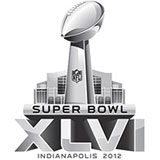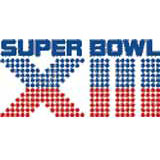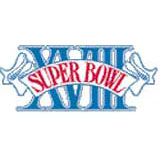
Welcome to the NCAA College Football information page.
College football is American football played by teams of students fielded by American universities and colleges, including United States military academies. It was the venue through which American football first gained popularity in the United States. College football remains extremely popular today among students, alumni, and other fans of the sport, particularly in the Southern and Midwestern parts of the country.
Modern American football has its origins in various games, all known as "football", played at public schools in England in the mid-19th century. By the 1840s, students at Rugby School in England were playing a game in which players were able to pick up the ball and run with it, a sport later known as Rugby union (or rugby). The game was taken to Canada by British soldiers stationed there and was soon being played at Canadian colleges.
The first game played between teams representing American colleges was played under rules more similar to the 1863 rules of the English Football Association, the basis of the modern form of soccer. The game, between teams from Rutgers College (now Rutgers University) and the College of New Jersey (now Princeton University), took place on November 6, 1869, at College Field (now the site of the College Avenue Gymnasium at Rutgers University) in New Brunswick, New Jersey. Rutgers won, by a score of 6 "runs" to 4. Other colleges followed suit, and for a short time soccer became the dominant code of "football" at U.S. colleges. Rutgers and Princeton, along with Columbia and Yale, met on October 18, 1873, to establish rules governing their athletic competition and specifically to codify rules for the emerging sport of football.
The American experience with rugby-style games began in 1874 at a meeting in Cambridge, Massachusetts, between Harvard University and Montreal's McGill University. The McGill team played a rugby-style game, while Harvard was isolated from other U.S. colleges by the fact that it played under rules which allowed greater handling of the ball than soccer. The teams agreed to play under compromise rules. The Harvard students took to the rugby rules and adopted them as their own.
Walter Camp, known as the "Father of American Football," is credited with changing the game from a variation of rugby into a unique sport. Camp is responsible for pioneering the play from scrimmage (earlier games featured a rugby scrum), most of the modern elements of scoring, the eleven-man team, and the traditional offensive setup of the seven-man line and the four-man backfield. Camp also had a hand in popularizing the game. He published numerous articles in publications such as Collier's Weekly and Harper's Weekly, and he chose the first College Football All-America Team.
College football increased in popularity through the remainder of the 19th century. It also became increasingly violent. In 1906, President Theodore Roosevelt threatened to ban the sport following a series of player deaths from injuries suffered during games. The response to this was the formation of what became the National Collegiate Athletic Association, which set rules governing the sport. One of the resulting rule changes was the introduction of the forward pass. Another was the banning of "mass momentum" plays (many of which, like the infamous "flying wedge", were sometimes literally deadly).
Prior to the founding of the National Football League and for a few decades thereafter, college football was the predominant venue of American football. Innovations in strategy and style of play originated in college football and spread to the professional game gradually. After World War II, professional football began to be the predominant football medium.
Even with the emergence of the NFL, college football remains extremely popular throughout the U.S. Because the accessibility of professional football is limited to major urban areas, the college game is especially popular in predominantly rural areas;[citation needed] some particularly notable examples of this may be found in Oklahoma, Oregon, Nebraska, West Virginia, Michigan, Indiana, Ohio, Iowa, central Pennsylvania, and throughout the Southern United States.
Although the college game has a much larger margin for talent than its pro counterpart, the sheer number of fans following major colleges provides a financial equalizer for the game, with Division I programs -- the highest level -- playing in huge stadiums (several of which have seating capacity exceeding 100,000). In many cases, the college stadiums employ bench-style seating (as oppsed to individual seats with backs and arm rests). This allows them to seat more fans in a given amount of space than the typical professional stadium, which tends to be a bit more luxurious.
A lack of a professional franchise is not necessarily an indicator of where the college game is most successful; for example, in California, Ohio, Texas, Pennsylvania, and Florida states which all have multiple NFL franchises - there are universities that also rank in the upper financial echelons of the college football. In many cases, though both collegiate and professional football teams exist in the same state, they reside in different cities.
Though college football is often a source of revenue for the participating university, college athletes, unlike professionals, are unpaid. Though many receive scholarships and financial assistance from the university, the income from these sources is often meager and certainly not sufficient to support a family. Because of this, the NCAA does not condone students financially supporting their family. Like other students, the NCAA encourages students to use their experiences in college to learn to be financially independent upon graduation.
Unlike the early years of college football, the upper echelons of the college football are now dominated by public schools. First-tier conferences are mainly made up of flagship public schools from each state.
SEASON SCHEDULE
The college football season begins two to three weeks earlier than the NFL, toward the end of August. Until 2003, the regular season was officially ushered in by the Kickoff Classic (other pre-season games such as the Eddie Robinson Classic and the Pigskin Classic have also been played). Recent NCAA rules changes have eliminated these games. The regular season continues through early December, ending with the annual Army-Navy Game and several conference championship games on the same weekend.
The postseason consists of a series of bowl games that showcase top college teams. Bowl games generally match two teams of similar standing from different conferences, although some pit a high ranked team from a smaller conference against a lower ranked team from a more prestigious one. Division I-A football is the only NCAA sport which does not decide its champion with a playoff. In the past, the unofficial national champion was determined by various polls, such as the AP Poll, Coaches Poll, and the United Press International Poll. This system was problematic because two polls often named different champions.
Since 1998, the National Championship has been determined by the Bowl Championship Series. This formula, incorporating numerous computer rankings and human polls, is used to determine the top two teams in the country.[1] The two teams compete for the championship in the BCS National Championship game, a fifth BCS bowl game held after the completion of all other BCS bowls. This new fifth bowl was introduced at the start of the 2006 season. The site of the BCS National Championship Game rotates every year between the four BCS Bowls: the Rose Bowl, Fiesta Bowl, Orange Bowl, and Sugar Bowl. The first BCS Championship game will be held on January 8, 2007 in the new University of Phoenix Stadium, the new home of the Fiesta Bowl. This system is not without controversy. Some critics argue that the system unfairly favors teams from large conferences and that the process used to select the teams can be just as ambiguous as the earlier poll system. Also, the Bowl Championship Series champion has not always been the undisputed national champion; for example, in 2003, the Associated Press and Bowl Championship Series chose different champions, which is what the system was designed to prevent. However, most years do have a consensus national champion.
The season concludes with series of all-star bowl games in January. These include the East-West Shrine Game, the Gridiron Classic, the Hula Bowl, and the Senior Bowl. However, the Gridiron Classic was recently declared canceled for 2006 because of lack of sponsorship.
The length of the season has gradually increased over the course of the game's history. In spring 2005, the NCAA ruled that teams could schedule twelve regular-season games (up from eleven) beginning in the 2006 season. This decision was met with some criticism from those who claimed that expanding the season would overwork the athletes.
RULES
Although rules for the high school, college, and NFL games are generally consistent, there are some differences. The NCAA Football Rules Committee determines the playing rules for Division I-A, I-AA, II, and III games (the National Association of Intercollegiate Athletics (NAIA) is a separate organization, but uses the NCAA rules). Some unique rules are:
A pass is ruled complete if one of the receiver's feet is inbounds at the time of the catch. In the NFL, both feet must be inbounds.
A player is considered down when any part of his body other than the feet or hands touches the ground (from a tackle or otherwise). In the NFL, a player is active until he is tackled or forced down another way by a member of the opposing team (down by contact).
A play may not be run until the referee declares the ball ready for play, at which time the play clock starts, which is 25 seconds, as opposed to 40 seconds from the end of the previous play in the NFL.
The game-clock is stopped when a first down is achieved to move and reset the chains. The clock restarts when the referee declares the ball ready for play, unless the previous play was ruled out of bounds. The clock then starts on the snap.
When a game goes to overtime, each team is given one possession from its opponent's twenty-five yard line. The leader after those possessions, if there is one, is declared the winner. If the teams remain tied, this continues, switching the order of possessions for each overtime, until one team leads the other at the end of the overtime. Extra points do not count from the 3rd overtime on, making it necessary for teams scoring touchdowns to attempt a two-point conversion. (In the NFL, overtime is decided by a 15-minute sudden-death quarter, and regular-season games can still end in a tie.)
Two-point conversions are attempted from the three-yard line. The NFL uses the two-yard line.
The defensive team can score on a failed conversion attempt. If the defense returns a blocked kick, fumble, or interception into the opposition end zone, it receives two points. In the NFL, a conversion attempt automatically ends once the defensive team gains possession of the football. The two-minute warning is not used.
Fan Zone - Show Your NFL Pride!
2016-08-29 15:44:56

Gisele McDonald
Kansas City Chiefs fan - Oaklahoma City2016-08-29 15:45:06

Rosa Agostinelli
Green Bay Packers fan - Providence2016-08-29 15:45:00

Hope De Los Santos
San Diego Chargers fan - Phoenix ArizonaSuper Bowl History
| Sunday | 1:00 pm | Ravens | @ | Bengals |
| 1:00 pm | Texans | @ | Titans | |
| 1:00 pm | Panthers | @ | Buccaneers | |
| 1:00 pm | Browns | @ | Steelers | |
| 1:00 pm | Cowboys | @ | Eagles | |
| 1:00 pm | Bills | @ | Jets | |
| 1:00 pm | Bears | @ | Vikings | |
| 1:00 pm | Jaguars | @ | Colts | |
| 1:00 pm | Patriots | @ | Dolphins | |
| 4:25 pm | Chiefs | @ | Chargers | |
| 4:25 pm | Cardinals | @ | Rams | |
| 4:25 pm | Raiders | @ | Broncos | |
| 4:25 pm | Giants | @ | Redskins | |
| 4:25 pm | Seahawks | @ | 49ers | |
| 4:25 pm | Saints | @ | Falcons | |
| 8:30 pm | Packers | @ | Lions | |
 | ||||
| NFL Season Schedule >>> | ||||
| No weeks currently open. |
| Visitor | vs | Home | Favorite | Spread |
| Ravens | @ | Bengals | Bengals | 2.5 |
| Texans | @ | Titans | Titans | 3 |
| Panthers | @ | Buccaneers | Buccaneers | 6 |
| Browns | @ | Steelers | Steelers | 7 |
| Cowboys | @ | Eagles | Eagles | 6 |
| Bills | @ | Jets | Bills | 6 |
| Bears | @ | Vikings | Vikings | 5.5 |
| Jaguars | @ | Colts | Colts | 4.5 |
| Patriots | @ | Dolphins | Patriots | 9.5 |
| Chiefs | @ | Chargers | Chiefs | 4.5 |
| Cardinals | @ | Rams | Cardinals | 6 |
| Raiders | @ | Broncos | Broncos | 2.5 |
| Giants | @ | Redskins | Redskins | 8 |
| Seahawks | @ | 49ers | Seahawks | 10 |
| Saints | @ | Falcons | Falcons | 7 |
| Packers | @ | Lions | Packers | 3 |
| View NFL Spread Information >>> | ||||




